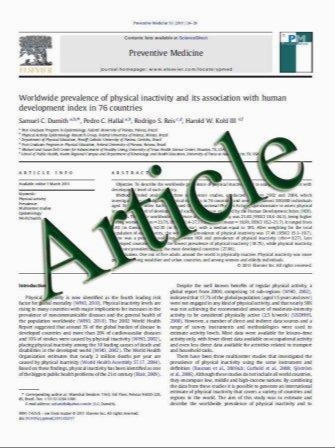Narrow Band Imaging to Detect Residual or Recurrent Neoplastic Tissue During Surveillance Endoscopy
- نوع فایل : کتاب
- زبان : انگلیسی
- مؤلف : Jason N. Rogart Harry R. Aslanian Uzma D. Siddiqui
- چاپ و سال / کشور: 2010
Description
Background There is little data on the prevalence of residual neoplastic tissue or the rate of endoscopically detected recurrence in patients with prior surgical or endoscopic resection of advanced neoplasia. Aims To compare standard white light with NBI for both the detection, as well as the differentiation, of residual or recurrent neoplastic tissue during real-time endoscopy. Methods A prospective study of 46 consecutive patients undergoing surveillance colonoscopy or upper endoscopy was conducted. Prior resection sites were examined first with white light and then with NBI. Main outcome measurements included the number of distinct lesions identified with white light, the number of additional lesions identified with NBI, and the overall accuracy of endoscopic diagnosis using white light alone or with NBI. Results Sixty discrete lesions were identified, 43 with white light alone, and an additional 17 with NBI. NBI identified more lesions per patient than white light alone (mean 1.33 vs. 0.96, p\0.05) and there was a trend towards increased detection of neoplastic lesions. Recurrent/ residual neoplasia was present in 14 patients (30%) and there was a trend towards increased detection with the addition of NBI. About 63% of lesions identified with white light appeared more extensive when examined with NBI. The diagnostic accuracy in predicting histology was equivalent for NBI and white light (87 vs. 88%), though there was a trend towards higher sensitivity for neoplastic lesions with NBI (88 vs. 69%, p = 0.16). Conclusions A substantial number of patients undergoing surveillance endoscopy had residual or recurrent neoplastic tissue identified at the prior resection site. As NBI detected additional neoplastic lesions as well as demonstrated that lesions detected with white light were more extensive, adjunctive use of NBI for examining post-endoscopy resection sites should be studied in future, larger studies.
Dig Dis Sci (2011) 56:472–478 DOI 10.1007/s10620-010-1289-z Received: 31 January 2010 / Accepted: 20 May 2010 / Published online: 9 June 2010 Springer Science+Business Media, LLC 2010 Abstract Background There is little data on the prevalence of residual neoplastic tissue or the rate of endoscopically detected recurrence in patients with prior surgical or endoscopic resection of advanced neoplasia. Aims To compare standard white light with NBI for both the detection, as well as the differentiation, of residual or recurrent neoplastic tissue during real-time endoscopy. Methods A prospective study of 46 consecutive patients undergoing surveillance colonoscopy or upper endoscopy was conducted. Prior resection sites were examined first with white light and then with NBI. Main outcome measurements included the number of distinct lesions identified with white light, the number of additional lesions identified with NBI, and the overall accuracy of endoscopic diagnosis using white light alone or with NBI. Results Sixty discrete lesions were identified, 43 with white light alone, and an additional 17 with NBI. NBI identified more lesions per patient than white light alone (mean 1.33 vs. 0.96, p\0.05) and there was a trend towards increased detection of neoplastic lesions. Recurrent/ residual neoplasia was present in 14 patients (30%) and there


